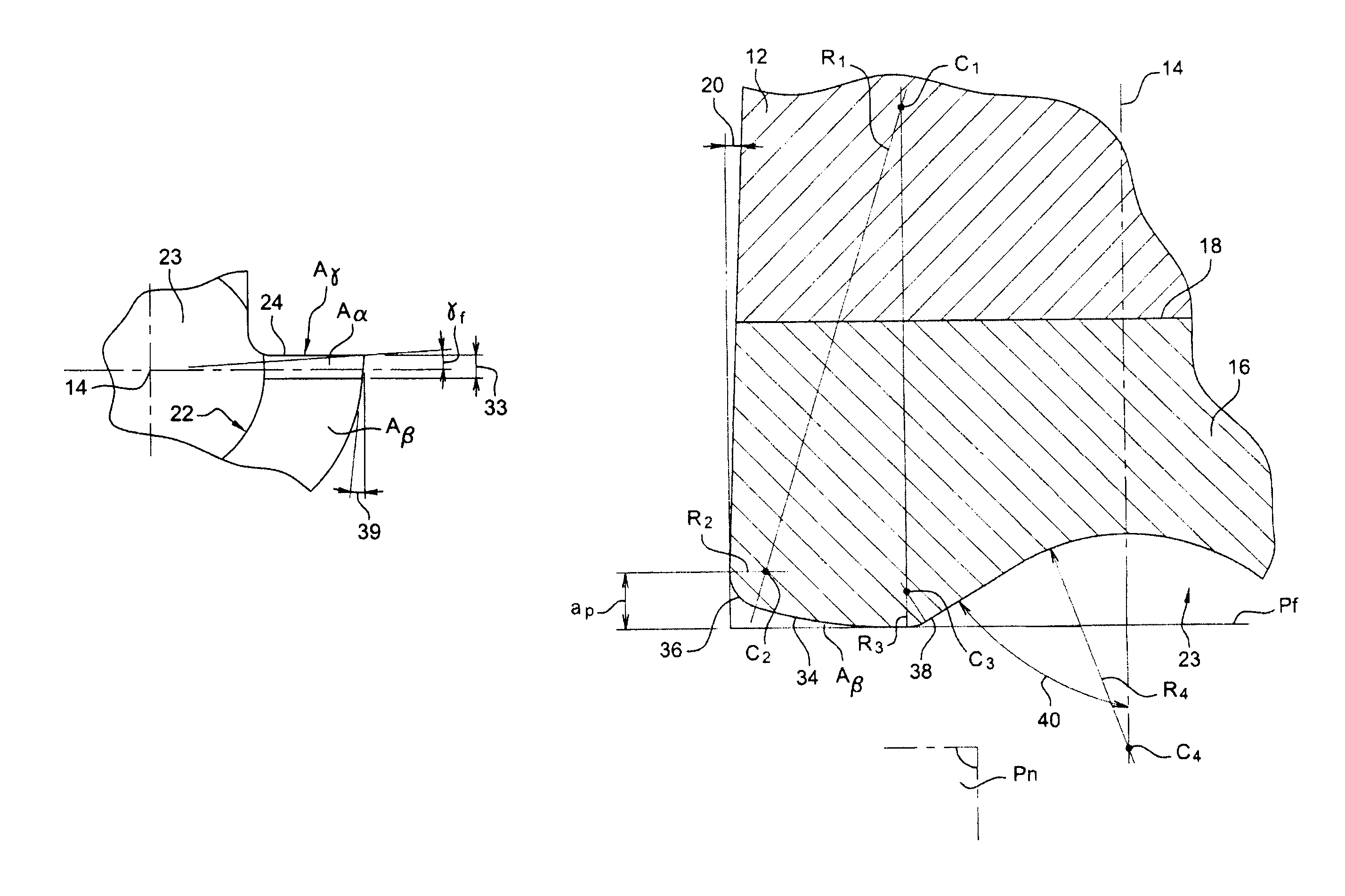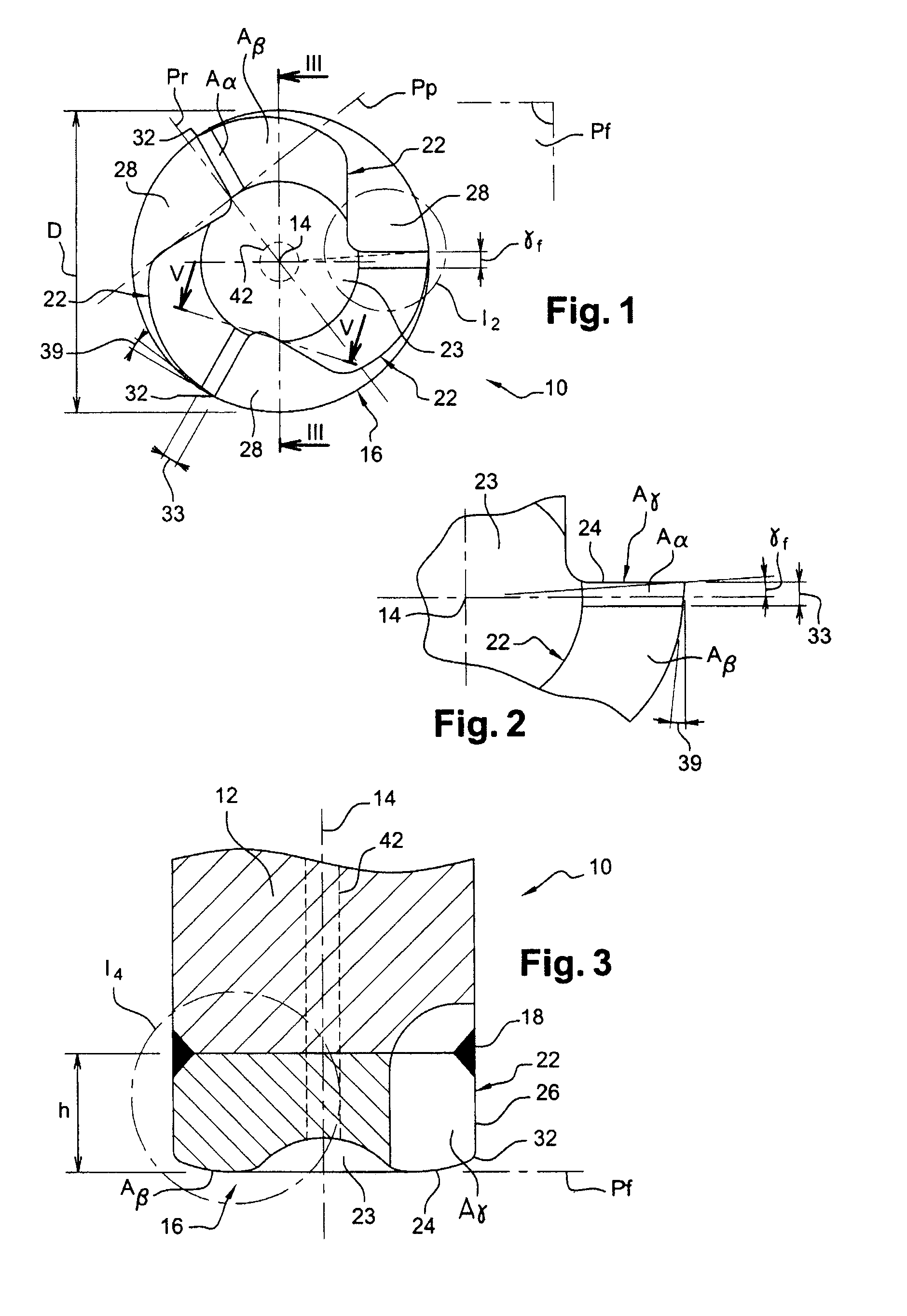Slotting milling cutter for machining with a high feed and a low pass depth
a milling cutter and low pass depth technology, applied in the field of milling cutters, can solve the problems of damage to the part to be machined, the cutting head of the milling cutter to be detached, and the two-part milling cutter of the above type to have a major drawback, so as to reduce the shear force
- Summary
- Abstract
- Description
- Claims
- Application Information
AI Technical Summary
Benefits of technology
Problems solved by technology
Method used
Image
Examples
Embodiment Construction
[0038]FIGS. 1 to 5 show a slotting milling cutter 10 according to the invention for machining at high speed and with a low pass depth of parts made of high-hardness materials, such as aeronautical materials made of a composite or a superalloy (for example Inconel 718).
[0039]This milling cutter 10 has a carbide body 12 of elongate shape extending along the rotation axis 14 of the milling cutter and, fixed to a free end of this body by brazing, is a head 16 cut from a ceramic, forming the active part of the milling cutter. To give an example, the body 12 of the milling cutter is made of tungsten carbide and its head 16 is made of an alumina-based ceramic. The brazed joint 18 lies in a plane perpendicular to the rotation axis 14 of the milling cutter (FIG. 3). The body 12 of the milling cutter is intended to be fixed by suitable means to the mandrel of a machine tool.
[0040]The milling cutter 10 has a general shape of a truncated cone. The large base of the truncated cone is located lev...
PUM
| Property | Measurement | Unit |
|---|---|---|
| angle | aaaaa | aaaaa |
| angle | aaaaa | aaaaa |
| radial cutting angle | aaaaa | aaaaa |
Abstract
Description
Claims
Application Information
 Login to View More
Login to View More - R&D
- Intellectual Property
- Life Sciences
- Materials
- Tech Scout
- Unparalleled Data Quality
- Higher Quality Content
- 60% Fewer Hallucinations
Browse by: Latest US Patents, China's latest patents, Technical Efficacy Thesaurus, Application Domain, Technology Topic, Popular Technical Reports.
© 2025 PatSnap. All rights reserved.Legal|Privacy policy|Modern Slavery Act Transparency Statement|Sitemap|About US| Contact US: help@patsnap.com



